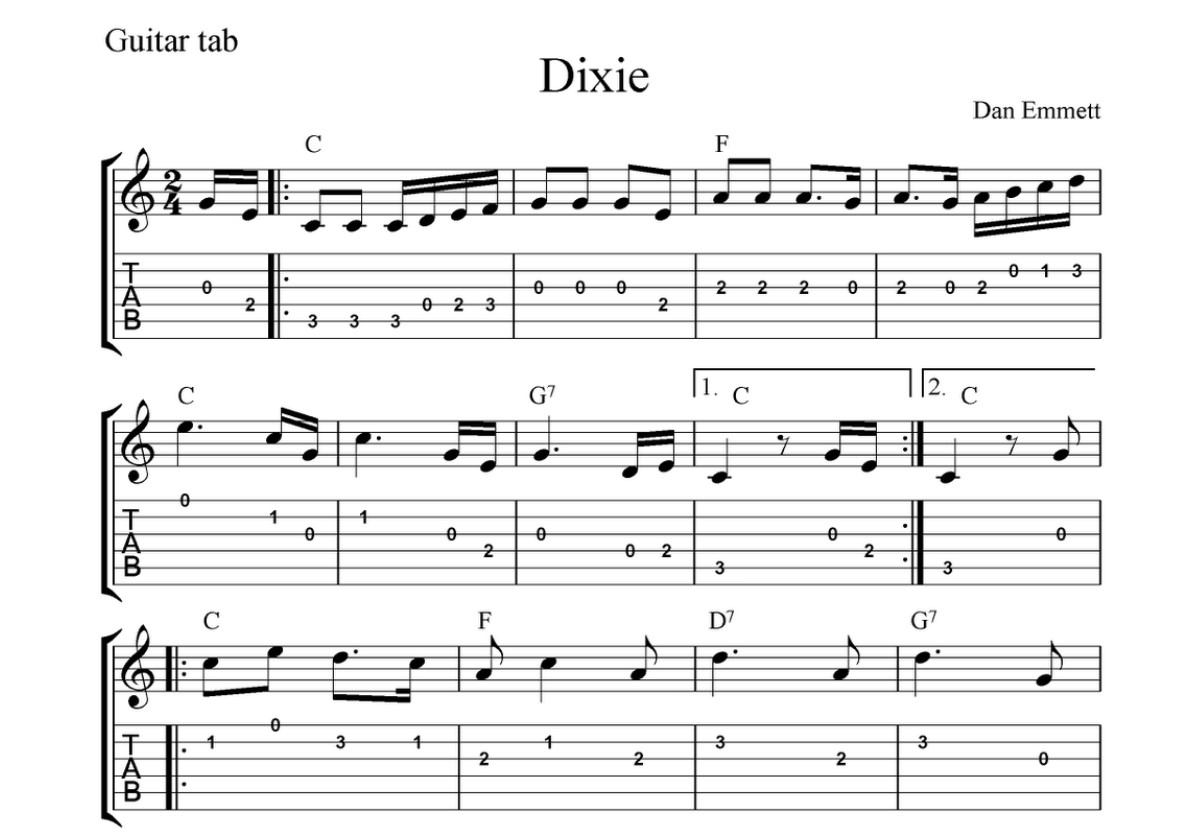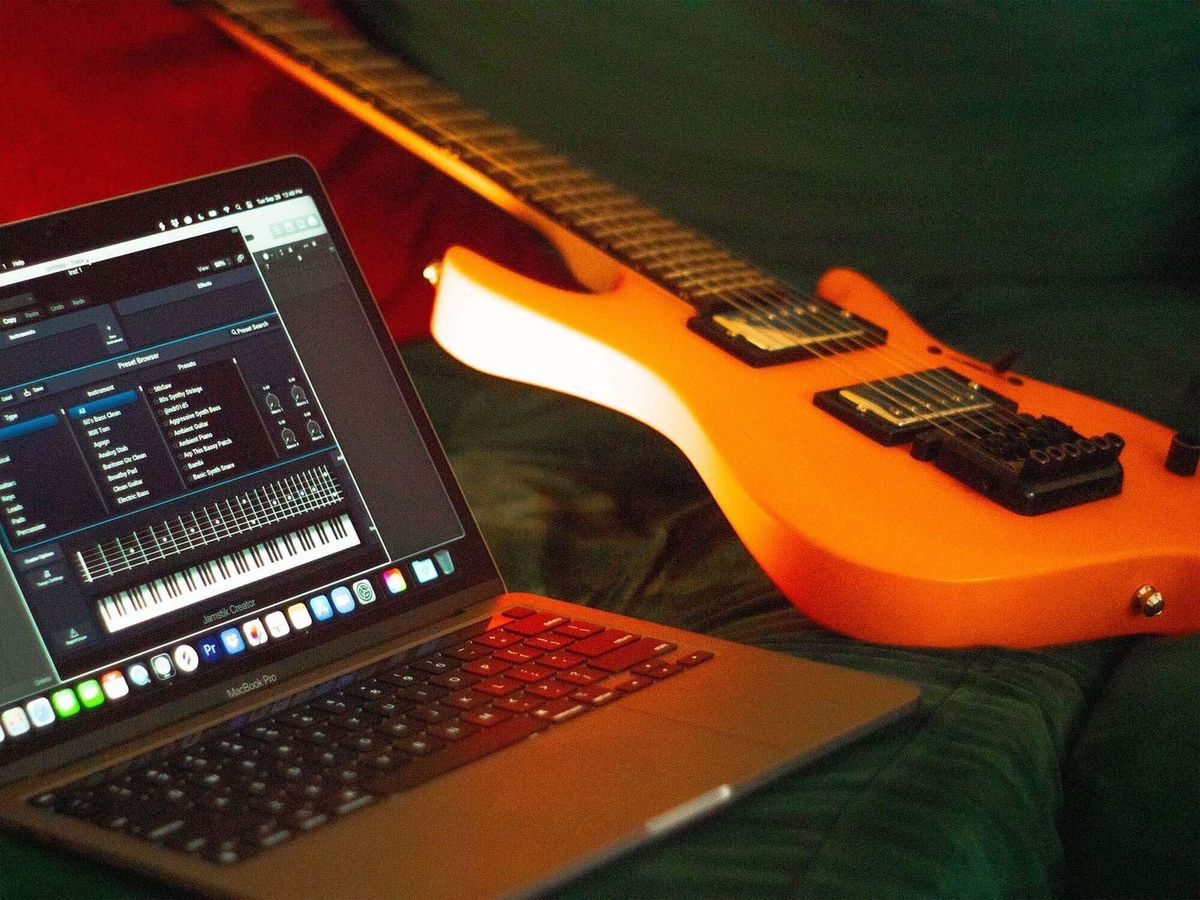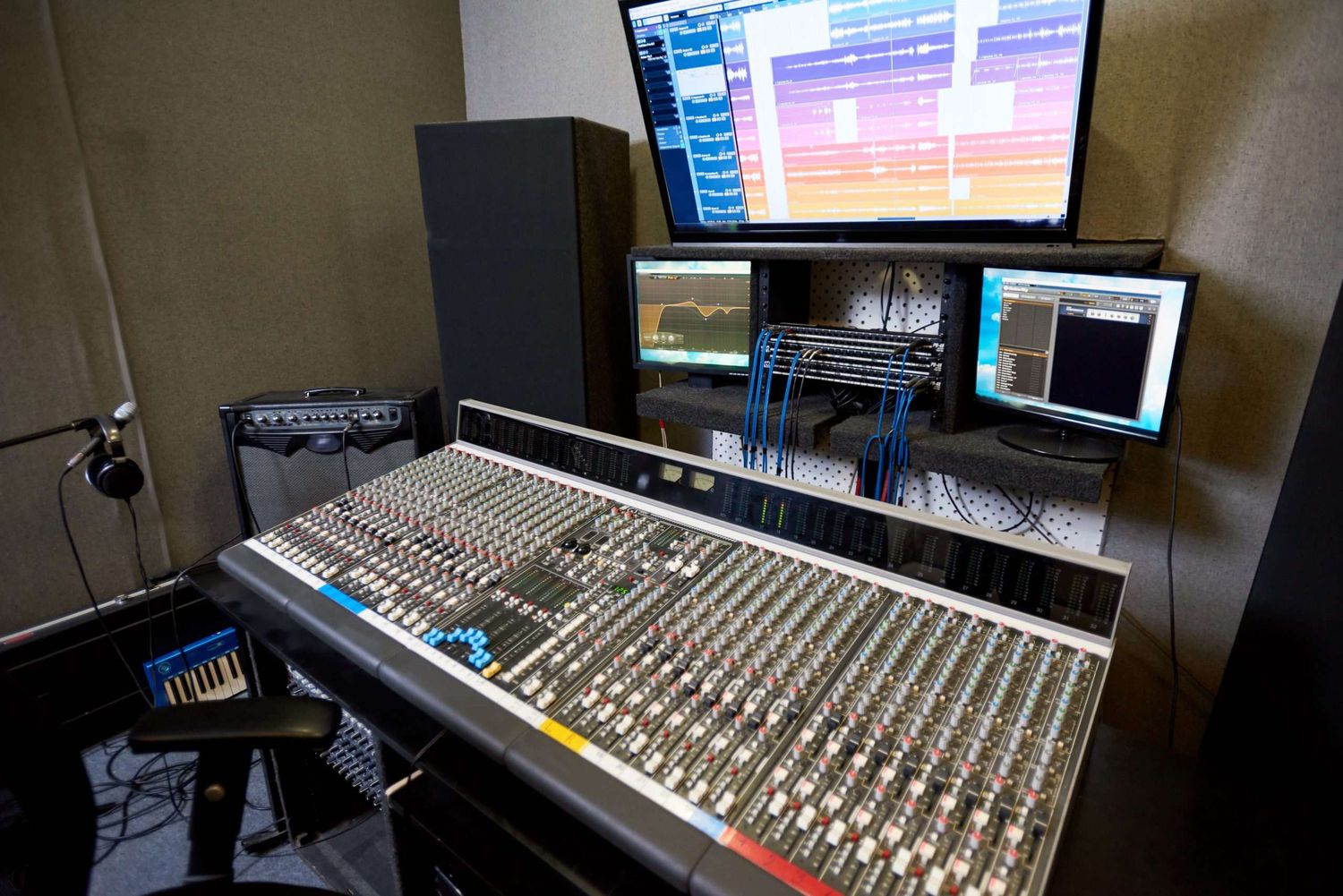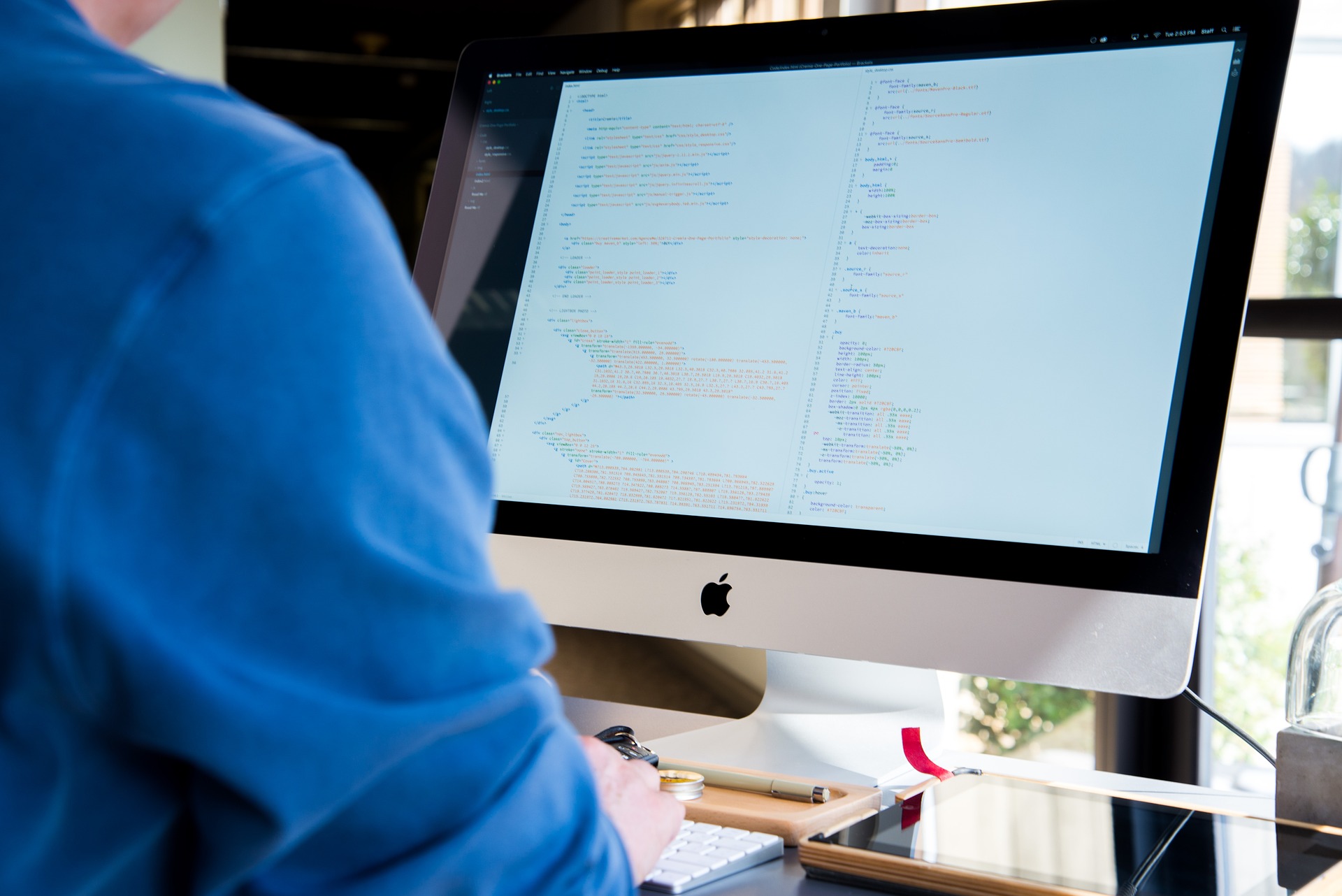Home>Production & Technology>MIDI>How To Convert Guitar MIDI To Tablature


MIDI
How To Convert Guitar MIDI To Tablature
Modified: February 22, 2024
Learn how to convert guitar MIDI to tablature easily with our step-by-step guide. Explore the best tools and techniques for MIDI to tab conversion.
(Many of the links in this article redirect to a specific reviewed product. Your purchase of these products through affiliate links helps to generate commission for AudioLover.com, at no extra cost. Learn more)
Table of Contents
Introduction
Are you a guitarist looking to transcribe your favorite MIDI files into guitar tablature? Or perhaps you're a music enthusiast eager to learn how to convert guitar MIDI to tablature? Look no further, as this comprehensive guide will walk you through the process, providing valuable insights and practical tips to help you achieve accurate and seamless conversions.
Converting guitar MIDI to tablature opens up a world of possibilities for musicians and enthusiasts alike. MIDI (Musical Instrument Digital Interface) files are a versatile format used to store musical data, including notes, tempo, and dynamics. On the other hand, guitar tablature, often referred to as "tabs," provides a visual representation of music specifically tailored for guitarists. By converting MIDI to tablature, you can easily interpret and play intricate guitar compositions, learn new songs, and create your own arrangements.
In this guide, we'll delve into the intricacies of guitar MIDI and tablature, explore the tools and software available for seamless conversion, and provide a step-by-step walkthrough to help you navigate the process with confidence. Whether you're a seasoned guitarist or a novice musician, understanding the conversion process will empower you to harness the full potential of MIDI files and unlock a treasure trove of musical possibilities.
So, grab your guitar, unleash your creativity, and let's embark on this exciting journey of transforming guitar MIDI into captivating tablature. Get ready to unravel the magic of music and elevate your guitar playing to new heights!
Understanding Guitar MIDI and Tablature
Guitar MIDI and tablature are essential components of the modern musician's toolkit, each serving a distinct purpose in the realm of musical notation and interpretation. Understanding the unique characteristics and functionalities of guitar MIDI and tablature is crucial for anyone seeking to convert MIDI files into guitar tablature effectively.
Guitar MIDI:
MIDI, short for Musical Instrument Digital Interface, is a universal standard for connecting electronic musical instruments, computers, and other audio devices. In the context of guitar music, MIDI files contain a wealth of musical data, including note information, tempo, dynamics, and instrument-specific nuances. When it comes to guitars, MIDI files store the essential elements of a musical composition, allowing for precise representation and playback.
Guitar MIDI files capture the intricacies of guitar performances, translating finger placements, strumming patterns, and fretboard techniques into digital data. This digital representation enables musicians to manipulate and interpret guitar music with remarkable flexibility, making MIDI an invaluable resource for both performers and composers.
Tablature:
On the other hand, guitar tablature, commonly known as "tabs," offers a visual representation of music specifically tailored for guitarists. Unlike traditional sheet music, which utilizes standard notation, guitar tablature presents music in a format that directly corresponds to the instrument's fretboard. Tabs provide guitarists with a clear and intuitive way to interpret melodies, chords, and intricate musical passages, making them an indispensable tool for learning and performing guitar music.
Guitar tablature consists of horizontal lines representing the guitar strings, with numbers indicating the frets to be pressed. This format allows guitarists to quickly grasp fingering positions and note sequences, making it accessible to musicians of varying skill levels. Whether you're learning a new song, transcribing a composition, or creating your own arrangements, guitar tablature empowers guitarists to explore and express their musical creativity with ease.
Bridging the Gap:
Converting guitar MIDI to tablature involves bridging the gap between the comprehensive musical data stored in MIDI files and the guitar-centric visualization offered by tablature. By understanding the nuances of both MIDI and tablature, musicians can effectively translate the richness of MIDI compositions into guitar-specific tablature, unlocking a world of musical possibilities.
As we delve deeper into the conversion process, it's essential to appreciate the unique attributes of guitar MIDI and tablature, recognizing their individual strengths and functionalities. By doing so, we pave the way for a seamless and accurate conversion that preserves the essence of the original composition while catering to the specific nuances of guitar music.
Understanding the intricacies of guitar MIDI and tablature sets the stage for a successful conversion journey, empowering musicians to harness the full potential of MIDI files and unlock a treasure trove of musical possibilities. Now, let's explore the tools and techniques for converting guitar MIDI to tablature, paving the way for a seamless and accurate transformation of musical data into captivating guitar notation.
Tools and Software for Converting Guitar MIDI to Tablature
When it comes to converting guitar MIDI to tablature, a myriad of tools and software options are available to streamline the conversion process and ensure accurate results. These specialized resources are designed to interpret MIDI data and transcribe it into guitar-specific tablature, catering to the unique nuances of guitar music. Let's explore some of the prominent tools and software solutions tailored for this purpose:
1. Guitar Pro:
Guitar Pro stands out as a versatile and powerful software application that excels in MIDI to tablature conversion. With its intuitive interface and robust feature set, Guitar Pro allows users to import MIDI files and seamlessly generate guitar tablature. The software offers comprehensive control over note placement, fingerings, and musical symbols, ensuring precise and customizable tablature output.
2. TuxGuitar:
TuxGuitar, an open-source software, serves as a popular choice for converting guitar MIDI to tablature. This feature-rich application supports a wide range of MIDI formats and provides an array of tools for transcribing MIDI data into guitar tablature. TuxGuitar's user-friendly interface and extensive notation options make it an accessible and efficient solution for musicians seeking to convert MIDI compositions into guitar-friendly tablature.
3. MuseScore:
MuseScore, renowned for its comprehensive music notation capabilities, offers robust support for MIDI import and conversion to tablature. This versatile software empowers users to leverage MIDI data and create expressive guitar tablature with precise notation and formatting. MuseScore's rich set of features, including playback options and score customization, enhances the conversion process, allowing musicians to craft polished and accurate tablature arrangements.
4. TablEdit:
TablEdit emerges as a specialized tool tailored for creating and editing tablature, making it an ideal choice for converting guitar MIDI to tablature. With its emphasis on fretted instruments, including guitars, TablEdit provides seamless MIDI import functionality and intuitive tablature generation tools. The software's focus on fretted instrument notation ensures that the converted tablature accurately reflects the intricacies of guitar music, catering to the specific needs of guitarists.
5. Online Tab Converters:
In addition to dedicated software applications, various online tab converters offer convenient solutions for converting guitar MIDI to tablature. These web-based tools allow users to upload MIDI files and receive instant tablature output, eliminating the need for extensive software installation. Online tab converters provide accessibility and convenience, enabling musicians to quickly convert MIDI compositions into tablature with ease.
By leveraging these tools and software solutions, musicians can seamlessly convert guitar MIDI to tablature, unlocking the potential of MIDI compositions and translating them into expressive and playable guitar notation. Whether you prefer feature-rich software applications or streamlined online converters, the diverse array of tools available caters to varying preferences and ensures a smooth and efficient conversion process. Now, armed with an understanding of these tools and software options, let's delve into the step-by-step guide for converting guitar MIDI to tablature, empowering you to embark on your conversion journey with confidence and creativity.
Step-by-Step Guide to Converting Guitar MIDI to Tablature
Converting guitar MIDI to tablature involves a systematic process that requires attention to detail and an understanding of the nuances of both MIDI data and guitar notation. By following this step-by-step guide, you can effectively transform MIDI compositions into expressive and accurate guitar tablature, unlocking the potential of MIDI files and harnessing the power of guitar-centric notation.
1. Selecting the Conversion Tool:
Begin by choosing a suitable tool or software for converting guitar MIDI to tablature. Whether you opt for a feature-rich software application like Guitar Pro or a streamlined online tab converter, ensure that the chosen tool aligns with your preferences and offers the necessary functionality for MIDI import and tablature generation.
2. Importing the MIDI File:
Once you have selected the conversion tool, proceed to import the guitar MIDI file into the software interface. This step establishes the foundation for the conversion process, allowing the software to interpret the musical data and prepare it for tablature transcription.
3. Configuring Conversion Settings:
Depending on the chosen tool, you may have the option to configure various conversion settings to tailor the tablature output to your specific requirements. Adjust parameters such as notation style, fretboard visualization, and playback options to ensure that the converted tablature accurately reflects the nuances of the original MIDI composition.
4. Transcribing and Notating:
With the MIDI file imported and the conversion settings configured, proceed to transcribe and notate the MIDI data into guitar tablature. Pay close attention to note placement, fingerings, chord voicings, and rhythmic elements, ensuring that the tablature captures the essence of the original guitar performance with precision.
5. Reviewing and Refining:
After transcribing the MIDI data, take the time to review and refine the tablature notation. Verify the accuracy of note placements, chord symbols, and other musical elements, making adjustments as needed to achieve a polished and cohesive tablature representation.
6. Playback and Verification:
Utilize the playback functionality of the conversion tool to verify the tablature against the original MIDI composition. This step allows you to listen to the tablature playback and cross-reference it with the MIDI file, ensuring that the converted tablature aligns with the intended musical expression and performance.
7. Saving and Exporting:
Upon completing the conversion process and verifying the tablature accuracy, save the tablature notation in the desired format. Whether you choose to export the tablature as a PDF, MIDI, or other compatible formats, ensure that the final output is accessible and suitable for your musical endeavors.
By following this comprehensive step-by-step guide, you can effectively convert guitar MIDI to tablature, unleashing the expressive potential of MIDI compositions and presenting them in a guitar-friendly format. This systematic approach empowers musicians to seamlessly bridge the gap between MIDI data and guitar notation, paving the way for immersive and captivating guitar tablature arrangements.
Tips and Tricks for Accurate Conversion
Achieving precise and faithful conversion from guitar MIDI to tablature requires attention to detail and a nuanced understanding of both musical notation formats. To ensure an accurate and seamless transformation, consider the following tips and tricks:
-
Fine-Tune Notation Settings: When using conversion software, explore the available notation settings to customize the tablature output according to your preferences. Adjusting parameters such as string tuning, fretboard visualization, and note duration representation can enhance the accuracy and readability of the converted tablature.
-
Validate Fretboard Fingerings: Pay close attention to the fingerings indicated on the tablature, ensuring that they align with practical fretboard positions and facilitate smooth transitions between notes and chords. Validating the fingerings enhances the playability of the tablature, reflecting the natural flow of guitar performance.
-
Consider Articulation and Expression: Take into account nuances such as bends, vibrato, slides, and hammer-ons/pull-offs present in the original MIDI composition. Incorporating these expressive elements into the tablature enriches the musical interpretation, capturing the subtleties of guitar performance with precision.
-
Utilize Rhythm Notation Tools: Many conversion tools offer specialized features for rhythm notation, allowing users to accurately represent strumming patterns, rhythmic accents, and syncopated rhythms in the tablature. Leveraging these tools enhances the rhythmic clarity of the tablature, enabling musicians to interpret and perform the composition with accuracy.
-
Cross-Reference with Audio Playback: After converting MIDI to tablature, cross-reference the tablature with the audio playback of the original MIDI file. Listening to the MIDI composition while following the tablature notation helps identify discrepancies and ensures that the converted tablature aligns with the intended musical expression.
-
Seek Community Feedback: Engage with fellow guitarists and musicians to gather feedback on the converted tablature. Sharing the tablature within music communities or seeking input from peers can provide valuable insights and perspectives, contributing to the refinement and accuracy of the tablature notation.
-
Embrace Iterative Refinement: Approach the conversion process as an iterative endeavor, allowing for multiple rounds of refinement and adjustment. Iteratively reviewing and refining the tablature notation fosters continuous improvement, leading to a more accurate and polished representation of the original MIDI composition.
By incorporating these tips and tricks into the conversion process, musicians can elevate the accuracy and fidelity of the converted tablature, ensuring that it authentically captures the essence of the original guitar MIDI composition. Embracing meticulous attention to detail and leveraging the capabilities of conversion tools empowers musicians to unlock the full potential of MIDI files and seamlessly translate them into expressive and accurate guitar tablature.
Conclusion
In conclusion, the process of converting guitar MIDI to tablature holds immense significance for musicians and enthusiasts, offering a gateway to unlocking the expressive potential of MIDI compositions in a guitar-centric format. Through this comprehensive guide, we have explored the intricacies of guitar MIDI and tablature, delved into the array of tools and software available for seamless conversion, and provided a step-by-step roadmap for transforming MIDI compositions into captivating tablature. As we wrap up this journey of musical transformation, it's essential to reflect on the transformative power of MIDI to tablature conversion and the boundless opportunities it presents for musicians.
By understanding the unique attributes of guitar MIDI and tablature, musicians can bridge the gap between comprehensive musical data and guitar-centric visualization, fostering a seamless and accurate conversion process. The tools and software solutions tailored for MIDI to tablature conversion empower musicians to harness the full potential of MIDI compositions, providing a platform for creative expression and musical exploration.
Moreover, the step-by-step guide outlined in this article serves as a roadmap for musicians to navigate the conversion process with confidence and precision, ensuring that the converted tablature faithfully represents the nuances of the original guitar MIDI compositions. From selecting the right conversion tool to refining and validating the tablature notation, each step contributes to the seamless translation of MIDI data into expressive and playable guitar tablature.
Furthermore, the tips and tricks shared in this guide serve as valuable insights for achieving accurate and faithful conversion, emphasizing the importance of fine-tuning notation settings, validating fretboard fingerings, and incorporating expressive elements to enrich the tablature representation. These considerations elevate the accuracy and fidelity of the converted tablature, ensuring that it authentically captures the essence of the original guitar MIDI compositions.
In essence, the journey of converting guitar MIDI to tablature transcends mere technicality, offering a pathway for musicians to engage with and interpret MIDI compositions in a guitar-centric context. Whether it's learning new songs, transcribing compositions, or creating original arrangements, the conversion process empowers musicians to seamlessly bridge the gap between MIDI data and guitar notation, unlocking a world of musical possibilities.
As musicians embark on their conversion journey, armed with a deeper understanding of guitar MIDI and tablature, along with the tools and techniques at their disposal, they are poised to explore, create, and express themselves through the captivating medium of guitar tablature. The transformative potential of MIDI to tablature conversion beckons musicians to embark on a journey of musical discovery, where the richness of MIDI compositions converges with the expressive canvas of guitar tablature, inspiring creativity and musical innovation.
In closing, the process of converting guitar MIDI to tablature not only facilitates the interpretation and performance of MIDI compositions but also fosters a deeper connection with the art of guitar music. As musicians embrace the conversion process, they embark on a transformative journey, where MIDI compositions are seamlessly translated into expressive and accurate guitar tablature, enriching the musical landscape and empowering musicians to unlock the full potential of their craft.











